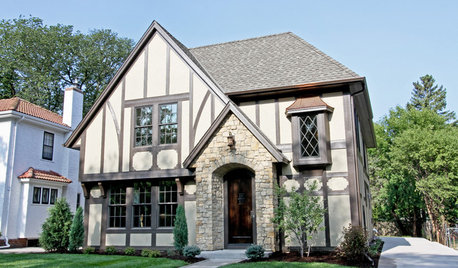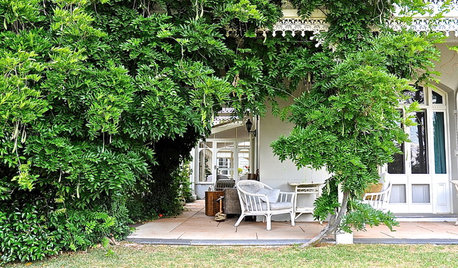Restore or Augment?
sunleafmoon
15 years ago
Related Stories

MEDITERRANEAN STYLEHouzz Tour: Beauty Restored to a 1930s Spanish Colonial Revival Home
Original details have been painstakingly preserved or reproduced in this Santa Barbara home
Full Story
CRAFTSMAN DESIGNMy Houzz: Small-Space Living in a Restored Bungalow
See how this homeowner celebrates his personal style, his flea market finds and the heritage of his 1919 Long Beach home
Full Story
KITCHEN DESIGNSexy Color Touches for Neutral Kitchens
Bring a little vavoom to a practical palette with small but colorful updates to your kitchen's backsplash, walls and fixtures
Full Story
ROOTS OF STYLERoots of Style: The Indelible Charm of American Tudors
Rich details and an intimate scale give this English-inspired architectural style memorable character and flexibilty
Full Story
HOUZZ TOURSMy Houzz: Tradition and Romance Live On at an 1875 Estate
Even without the ballroom, gazebo and resident peacock, this Australian property would be an idyllic wonder to behold
Full Story
HOUZZ TOURSHouzz Tour: A 1905 Cottage Gets a Major Family Update
Historic Boston meets outdoors Oregon in this expanded California home
Full Story
DECLUTTERINGDownsizing Help: How to Get Rid of Your Extra Stuff
Sell, consign, donate? We walk you through the options so you can sail through scaling down
Full Story
PETSA Romp Through Pet-Friendly Materials
Deceptively durable, these stylish flooring materials and fabrics let you give Fluffy the run of the house
Full Story
UPHOLSTERYFurniture Clinic: End the Curse of Slouchy Couch Cushions
Prolong the life of your couch with this inexpensive fix that’s so easy, even a beginning sewer can do it
Full Story
PETS6 Ways to Help Your Dog and Landscape Play Nicely Together
Keep your prized plantings intact and your dog happy too, with this wisdom from an expert gardener and dog guardian
Full StorySponsored



blueridgemtngrl
sunleafmoonOriginal Author
Related Discussions
Thanksgiving
Q
Happy Thanksgiving!
Q
Just for guys - technical support
Q
Sources of Inspiration
Q
User
sunleafmoonOriginal Author
christie_sw_mo
christie_sw_mo
bob64
User
sunleafmoonOriginal Author
christie_sw_mo
bob64
sunleafmoonOriginal Author
wantonamara Z8 CenTex
bob64
terrene
sunleafmoonOriginal Author
asters